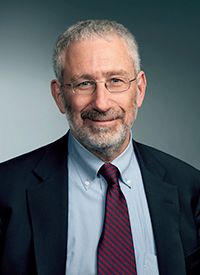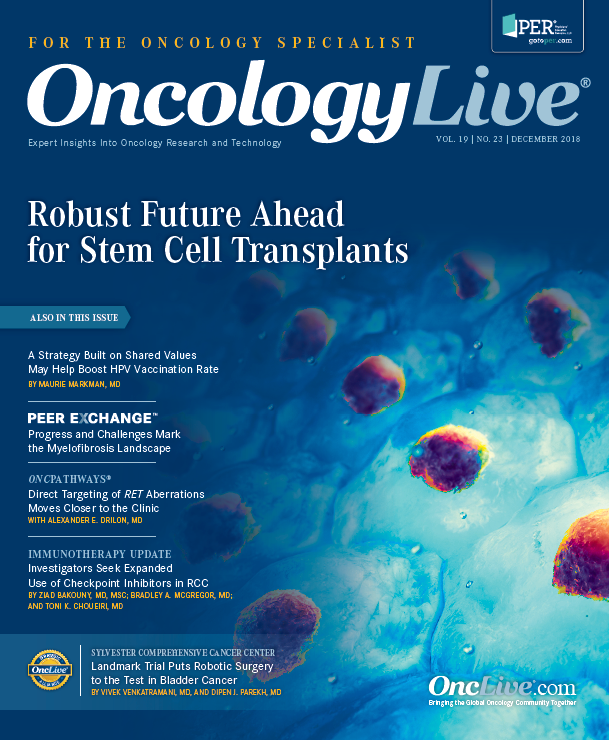A Strategy Built on Shared Values May Help Boost HPV Vaccination Rate
Maurie Markman, MD, discusses the steps that the scientific community needs to take to increase public acceptance of the vaccine against the human papillomavirus.
Maurie Markman, MD

Maurie Markman, MD
If vaccination against the human papillomavirus (HPV) were being ranked on a scale of 1 to 100 in terms of level of evidence for the safety, efficacy, and potential to substantially impact the risk of developing and the cost of treating malignant disease, it must be scored at 110—if not higher—as an approach to cancer prevention.1
The well-documented clinical utility of HPV vaccination has been revealed through definitive knowledge of the virus as a major causative agent in the development of a number of malignancies, such as cervix, vulvar, anal, penile, and oropharyngeal cancers. The results of multiple high-quality phase III randomized trials in cervix cancer confirm the vaccine’s safety and efficacy, supported by findings from population-based observational studies following the implementation of a vaccination strategy.1,2 Of note, the percentage of high-risk HPV type 16 and 18 responsible for HPV-associated noncervical cancers (86% to 95%) is even greater than it is for cervix cancer (70%), leading to the highly rational conclusion that vaccination against these strains with commercially available vaccines will be as effective, if not more effective, in preventing these malignancies in noncervical cancers as it is in cervix cancer.3 Finally, although the prevalence of HPV within the adult population in the United States ranges between 40% to 45%, and high-risk HPV prevalence ranges between 20% to 25%,4 early studies have confirmed a striking decrease in the population-based prevalence of HPV following implementation of an HPV vaccination strategy.5
However, the continued inability of the combined efforts of the public health and medical communities to present a compelling argument to ensure near-universal HPV vaccination must reasonably be considered, as of this date, to be distressing.1 In 2017, available data indicate that less than half (43.4%) of eligible adolescents were up-to-date for receipt of the HPV vaccine series, which was only slightly improved (+2.2%) from the preceding year.6
Many explanations have been provided for this problematic state of affairs, including a general distrust among many in society about the safety of vaccinations,7 misinformation widely shared through social media8 and the internet,9 and the fact that HPV is a sexually transmitted disease, which for some parents makes for a most difficult discussion. However, regardless of the reasons for the current ineffective vaccination strategy, alternative approaches must be considered.
Facts Will Not Overcome Denials
Remarkably, some within the scientific community have suggested that suppressing open and honest scientific discourse regarding possible uncertainties associated with vaccination should be considered, the purpose of which is to somehow dampen the voices of the antivaccination advocates.10 Such strategies are likely to be highly counterproductive, since they run the risk of encouraging those who see conspiracy around every corner. Further, and of even greater relevance, this approach is strikingly in opposition to the basic principles of authentic and rigorous scientific discourse.The exact opposite approach is what the oncology community should encourage—meet directly with those who doubt or deny the science, seek to understand their often deeply felt concerns, and attempt to overcome the fears associated with this highly beneficial approach to cancer prevention.
In fact, recent research has begun to unveil the psychological underpinnings of such strident human beliefs. In a most provocative study, investigators found that experimental subjects exposed to “threatening faces” began to identify previously stated “neutral faces as threatening when threatening faces became rare” and that previously declared “innocuous requests” were viewed as “unethical requests when such unethical requests became rare.”11 These data suggest the difficulty of changing established beliefs in the face of information that may seriously challenge those beliefs. Other lines of research reveal that “people pay selective attention to arguments that simply reinforce their own viewpoints.”12
As noted in a thoughtful editorial in Science regarding the inability of scientists to convey critical objectively valid messages related to global warming, the most important factor influencing support for the seriousness of climate change is not the extent of available scientific information but rather political beliefs.13 Bombarding individuals with more data on the value of vaccination, when they are simply unprepared and unwilling to listen based on considerations other than “the science,” such as religious conviction or fear of government control over their lives/bodies, is unlikely to be helpful.
So, as suggested in the aforementioned Science editorial: “Scientists can be effective communicators by bonding over a value that they genuinely share with the people with whom they are speaking. It doesn’t have to be a shared faith. It could be that both are parents, or live in the same place, or are concerned about water resources or national security, or enjoy the same outdoor activities. Instead of beginning with what most divides scientists from others, start the conversation from a place of agreement and mutual respect. Then, scientists can connect the dots: share from their head and heart why they care.”13
How about that for a novel strategy? Probably worth a try.
References
- Bailey HH, Chuang LT, duPont NC, et al. American Society of Clinical Oncology statement: human papillomavirus vaccination for cancer prevention. J Clin Oncol. 2016;34(15):1803-1812. doi: 10.1200/JCO.2016.67.2014.
- Arbyn M, Xu L, Simoens C, Martin-Hirsch PP. Prophylactic vaccination against human papillomaviruses to prevent cervical cancer and its precursors. Cochrane Database Syst Rev. 2018;5:CD009069. doi: 10.1002/14651858.CD009069.pub3.
- Gillison ML, Chaturvedi AK, Lowy DR. HPV prophylactic vaccines and the potential prevention of noncervical cancers in both men and women. Cancer. 2008;113(10 suppl):3036-3046. doi: 10.1002/cncr.23764.
- McQuillan G, Kruszon-Moran D, Markowitz LE, Unger ER, Paulose-Ram R. Prevalence of HPV in adults aged 18-69: United States, 2011-2014. NCHS Data Brief. 2017;280:1-8. cdc.gov/nchs/data/databriefs/db280. pdf. Published April 2017. Accessed November 17, 2018.
- Active protection: parents should vaccinate their children against human papillomavirus [editorial]. Nature. 2013;499(7458):253-254. doi: 10.1038/499253b.
- Walker TY, Elam-Evans LD, Yankey D, et al. National, regional, state, and selected local area vaccination coverage among adolescents aged 13-17 years—United States, 2017. MMWR Morb Mortal Wkly Rep. 2018;67(33):909-917. doi: 10.15585/mmwr.mm6733a1.
- Omer SB, Salmon DA, Orenstein WA, deHart MP, Halsey N. Vaccine refusal, mandatory immunization, and the risks of vaccine-preventable diseases. N Engl J Med. 2009;360(19):1981-1988. doi: 10.1056/NEJMsa0806477.
- Keelan J, Pavri-Garcia V, Tomlinson G, Wilson K. YouTube as a source of information on immunization: a content analysis. JAMA. 2007;298(21):2482-2484. doi: 10.1001/jama.298.21.2482.
- Wolfe RM, Sharp LK, Lipsky MS. Content and design attributes of antivaccination web sites. JAMA. 2002;287(24):3245-3248. doi: 10.1001/jama.287.24.3245.
- Moyer MW. The censorship of vaccine science. New York Times. August 5, 2018: SR7.
- Levari DE, Gilbert DT, Wilson TD, Sievers B, Amodio DM, Wheatley T. Prevalence-induced concept change in human judgment. Science. 2018;360(6396):1465-1467. doi: 10.1126/science.aap8731.
- Kenrick DT, Cohen AB, Neuberg SL, Cialdini RB. The science of antiscience thinking. Sci Am. 2018;319(1):36-41. doi: 10.1038/scientificamerican0718-36.
- Hayhoe K. When facts are not enough. Science. 2018;360(6392):943. doi: 10.1126/science.aau2565.

Latest Conference Coverage

Navigating the Intersection of Radiation Therapy and Immunotherapy in Endometrial Cancer

As Orthopedic Oncology Evolves, Caring for the Clinician Must Be a Priority

Belumosudil Produces Long-Term Responses Without New Safety Concerns in cGVHD

Prophylactic Itacitinib May Safely Mitigate CRS Following Axi-Cel Administration in Lymphoma
2 Commerce Drive
Cranbury, NJ 08512